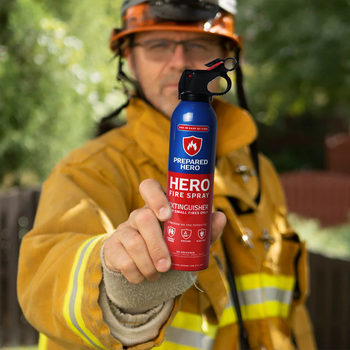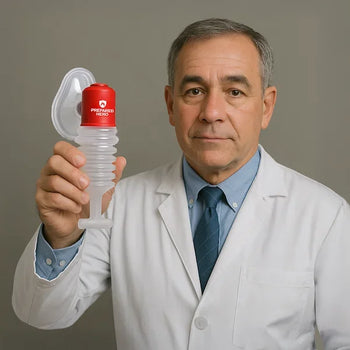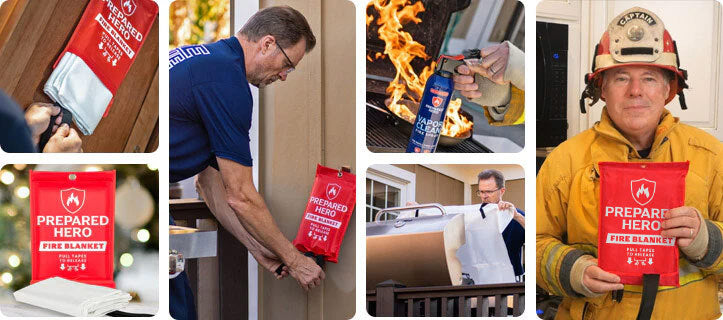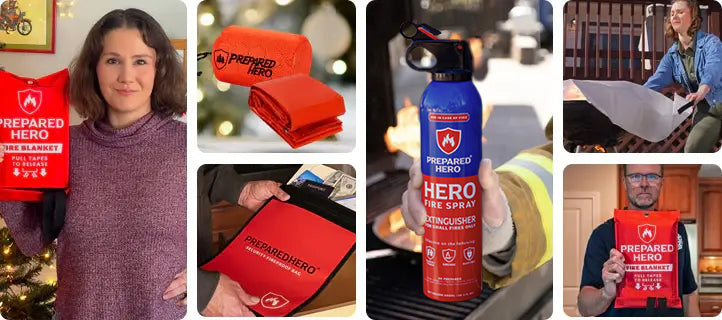Where you put your smoke detectors matters just as much as installing them. Proper placement makes sure they can detect...
Dust builds up fast, contaminates your air, and puts your health at risk. If you're wondering whether an air purifier helps, you're in the right place. This guide explains how they work, which filters to use, and how to make the most out of them.
How Air Purifiers Work

Air purifiers are appliances that clean the air inside your home. First, they pull in the air using a built-in fan. The air then passes through filters as it flows through the air purifier. The most common ones are called HEPA (High-Efficiency Particulate Air) filters. They trap dust, pet dander, pollen, and some bacteria.
Some models also have carbon filters that soak up gases and odors, like cooking or fireplace smells. This is a huge bonus if you have allergies or don’t like strong smells.
The cleaned air is then pushed back into the room. The process repeats throughout the day. Some units even go the extra mile by having ultraviolet light that kills germs or releasing ions that help particles settle out of your air.
Air purifiers can work pretty much anywhere, including houses, apartments, commercial spaces, and condos. Just make sure you have the right size for the room. Air purifiers help you breathe clean air without sacrificing your pets or scented candles.
Do Air Purifiers Remove Dust?
Yes, air purifiers remove up to 99% of dust from the air. Most modern air purifiers are built with HEPA filters that can trap dust, pollen, pet dander, and other small particles floating around your home. But here’s the thing: they’re not magic machines that do all the work for you.
Where you place your air purifier also matters. It works best in areas with a lot of foot traffic or where dust tends to build up. Also, not all air purifiers cover the same size space, so it’s important to match the purifier’s capacity with the size of your room.
Plus, you have to clean and vacuum regularly for it to work well. Some filters are washable, while others need to be vacuumed gently to clear out built-up dust. Check your purifier’s manual to see how to clean it properly.
In short, an air purifier can help a lot, but it works best alongside your regular cleaning routine.
How Dust Affects Our Health
 Dust is more than something you wipe off shelves. It will play havoc with your health in tangible ways. From allergy through asthma and even skin problems, this is how dust can affect your body more than you would imagine.
Dust is more than something you wipe off shelves. It will play havoc with your health in tangible ways. From allergy through asthma and even skin problems, this is how dust can affect your body more than you would imagine.
- Allergies: Dust often carries things like dust mites, mold spores, and pollen. These can trigger sneezing, itchy eyes, runny noses, and other allergy symptoms.
- Asthma: Dust can make things worse if you or someone in your home has asthma. Breathing it in can irritate your airways and cause asthma attacks, especially in kids and older adults.
- Respiratory Infections: Dust can also hold onto bacteria and viruses. This raises your risk of getting sick with things like bronchitis or even pneumonia.
- Skin Irritation: Dust can also make flare-ups more likely if you have sensitive skin or conditions like eczema. It can leave your skin itchy, red, or inflamed.
Is It Healthy to Sleep With an Air Purifier?
Yes, it’s healthy to sleep with the air purifier on. It will purify the air for you as you sleep, and the number of allergens like dust and pollen will decrease. This means there will be fewer night sneezing fits or congestion. You’ll also probably sleep better at night, especially if you’re allergic or have asthma. Just make sure to pick a silent model so the sound won’t distract you. Breathing cleaner air all night can also help lower stress and support better overall health.
Is There a Downside to Air Purifiers?
 Air purifiers clean indoor air, but they’re not perfect. One common downside is that some models, especially ones with ionizers, can release ozone. Ozone might sound harmless, but it’s actually a lung irritant. Breathing it in regularly can trigger asthma, allergies, or other breathing issues. That’s why it’s important to check the label and pick a purifier that doesn’t produce ozone, especially if you or someone in your home has respiratory issues.
Air purifiers clean indoor air, but they’re not perfect. One common downside is that some models, especially ones with ionizers, can release ozone. Ozone might sound harmless, but it’s actually a lung irritant. Breathing it in regularly can trigger asthma, allergies, or other breathing issues. That’s why it’s important to check the label and pick a purifier that doesn’t produce ozone, especially if you or someone in your home has respiratory issues.
Another risk people don’t often think about is fire. Like any appliance, air purifiers can overheat if they’re not used properly, especially when filters are clogged or vents are blocked. Having a fire blanket or fire spray on hand can help you act fast and stop a small fire before it spreads. Clean your purifier regularly and pair it with fire prevention tools for a safer, healthier home.
Do you want reliable, easy-to-use, and affordable tools to put out small fires before they spread? Check out Prepared Hero’s fire prevention tools here, and get up to 51% off on certain items.
What Type of Filter Is Best for Dust?
If you want to trap dust effectively, go with a HEPA filter. These filters are built to catch tiny particles (up to 99.97% of them), including dust, pollen, and even bacteria. That makes them a solid pick for people with allergies, asthma, or other breathing issues. HEPA filters can be a bit more expensive than standard ones, but they do a much better job at cleaning the air. If your goal is less sneezing and easier breathing at home, it’s worth the upgrade.
Tips for Using an Air Purifier to Get Rid of Dust

Using an air purifier is a great way to reduce dust, but you need some know-how to get the most out of it. Here are some tips for using an air purifier properly:
1. Check the CADR rating.
The CADR (Clean Air Delivery) rating tells you how quickly the purifier can clean dust, smoke, and pollen from the air. A higher number means it can filter faster. For example, a 200-square-foot room should have a purifier with at least a 130 CADR. Bigger rooms or ones with tall ceilings might need a higher CADR or extra purifiers.
2. Pick the right spot.
Put the purifier in the room where you spend the most time. Make sure it has space around it so air can flow freely. Don’t shove it into a corner or behind furniture. It needs room to pull in air and push clean air out.
3. Use a good filter.
HEPA filters are the gold standard when it comes to dust. They remove 99.97% of the dust, pollen, and even minuscule particles. You can also consider the MERV (Minimum Efficiency Reporting Value) rating. The bigger the number, the more effective the filter is at capturing dust.
4. Adjust the fan speed.
Higher fan speeds clean the air faster. If you’re dealing with a lot of dust, crank it up and let it run longer.
5. Look for helpful labels.
An Energy Star label means it won’t waste electricity. Plus, you know it’s been tested to help with dust and allergens if it’s certified by the Asthma and Allergy Foundation of America.
How Long Does It Take for Air Purifiers to Work?

Air purifiers usually work within 30 minutes to two hours, depending on a few things. Room size, how powerful your purifier is, and how dirty the air was to begin with all play a role. If you’re dealing with dust or smoke, you might feel the air getting cleaner in under an hour.
However, it’s best to keep the purifier running throughout the day for the best results, especially in busy areas. That way, it filters new particles as they show up.
Why Is My Air Purifier Not Picking Up Dust?
Your air purifier is not picking up dust, likely because of a dirty or clogged filter. Over time, filters get filled with dust, mold, pollen, and the like. When this happens, they stop working properly. So even when the air purifier is on, it won’t pick up dust.
Another reason why your air purifier doesn’t pick up dust is putting it in the wrong spot. If your purifier is jammed into a corner or covered, the airflow is blocked. Plus, your purifier won’t clean the air well if it’s too small for the room.
If you want to make sure it’s working, check the airflow and sound. If it’s blowing air normally and not struggling, great. Still unsure? Use an air quality monitor to see if the air’s actually improving. Don’t rely on built-in sensors because they’re often not accurate. Clean filters, using the right size, and good placement matter most.
How Do You Get Dust Out of an Air Purifier?

Get dust out of an air purifier by unplugging it first. Then, remove the filters, and check if yours has a pre-filter and a HEPA filter. Rinse the filters with water if they’re washable. Next, wash them with mild soap. Let them dry completely before putting them back.
If your filters aren’t washable, use a vacuum with a brush attachment to clean off the dust. If you have disposable filters, just replace them.
While the filters are out, vacuum the inside of the unit and wipe it down with a damp cloth: nothing too wet, and no harsh cleaners. Do the same for the outside.
Once everything’s clean and dry, put the parts back together and plug it in. Clean your air purifier regularly, and follow your model’s specific maintenance instructions to keep it working well. Remember, clean filters mean cleaner air.
Are You Supposed to Let Air Purifiers Run All Day?
Yes, you can let air purifiers run all day. Having it on guarantees the air remains cleaner during the day, especially if you live in a polluted area, have pets, or have allergies. It does the most work when it’s on at all times because it keeps removing the dust, pollen, and debris as they’re in the airborne movement.
Of course, the filter will need to be replaced more frequently and more electricity will have to be consumed, but the trade-off is cleaner air and fewer allergies or breathing difficulties. If your purifier has an auto mode, that’s even better. It can adjust the speed based on how dirty the air is. All in all, running it all day helps keep your space fresher and healthier.
How Long Does It Take for an Air Purifier to Get Rid of Dust?

You might notice less dust in the air within 30 to 60 minutes of turning on your air purifier. However, you should give it a few hours for a bigger difference, especially in overall air quality. If you let it run continuously for 24 hours, you'll get even better results. Keeping it on regularly also helps maintain cleaner, healthier air in the long run.
Where Should I Place an Air Purifier for Dust?
Place your air purifier where air moves the most, like near windows, doors, or right in the middle of the room. You can also put it close to dust-heavy spots, like near your bed or by the kitchen. Just make sure it’s not blocked by furniture. It needs space around it so air can flow in and out easily for better dust removal.
Why Is My Room Still Dusty With an Air Purifier?

Your room is still dusty even with an air purifier on because of dust on surfaces, filter issues, or improper air purifier placement.
If your room still feels dusty even with an air purifier, you're not alone. The main reason? Air purifiers only clean the air. It does not clean the dust that has settled on your furniture, floors, or shelves.
Another reason is the filter. It won’t catch much dust if it’s dirty or clogged. Plus, using an air purifier that is too small for your room or shoving it into a corner renders it useless.
In addition, walking, opening windows, or having pets stir up more dust. You’ve also got to watch out for indoor sources like skin flakes, fabric fibers, and your HVAC system, which might be blowing dust around.
If you want to cut down the dust, clean your surfaces often, vacuum regularly, and keep your air purifier in a central, open spot. Don’t forget to change the filter when needed. An air purifier helps a lot, but it works best when paired with solid cleaning habits.
Conclusion
Air purifiers help with dust, but they work best when used properly and with frequent cleaning. From using a high-quality filter to proper placement, every bit counts. Stay safe, hero!


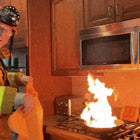 Fire
Fire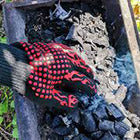 Safety
Safety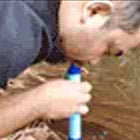 Survival
Survival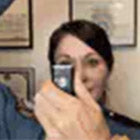 Protection
Protection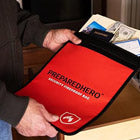 New
New
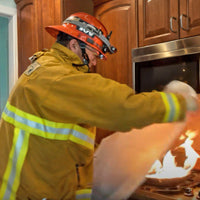 Fire
Fire Safety
Safety Survival
Survival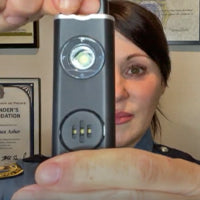 Protection
Protection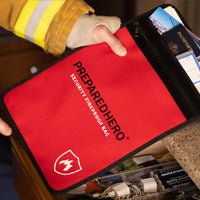 New
New



